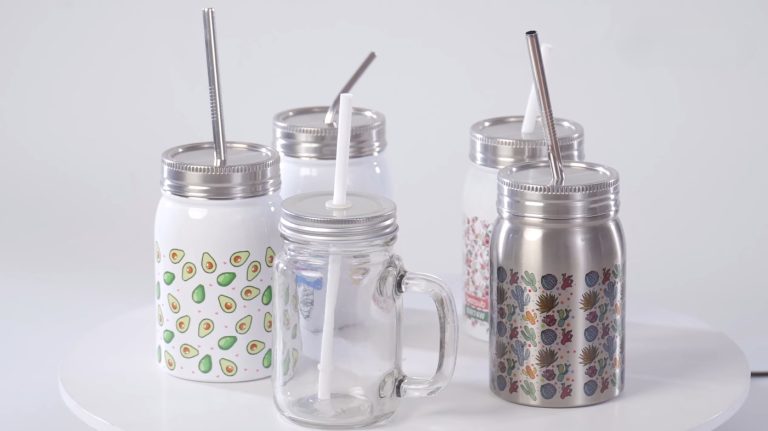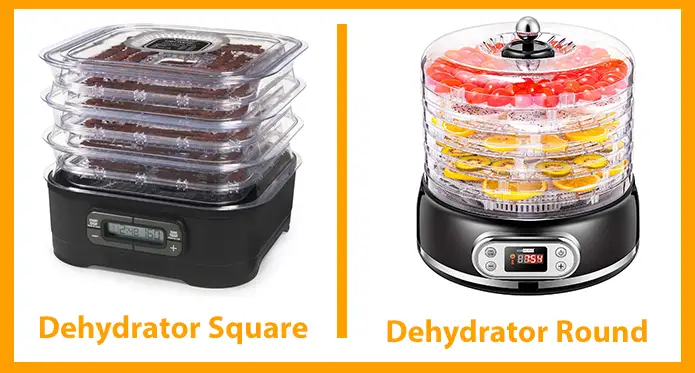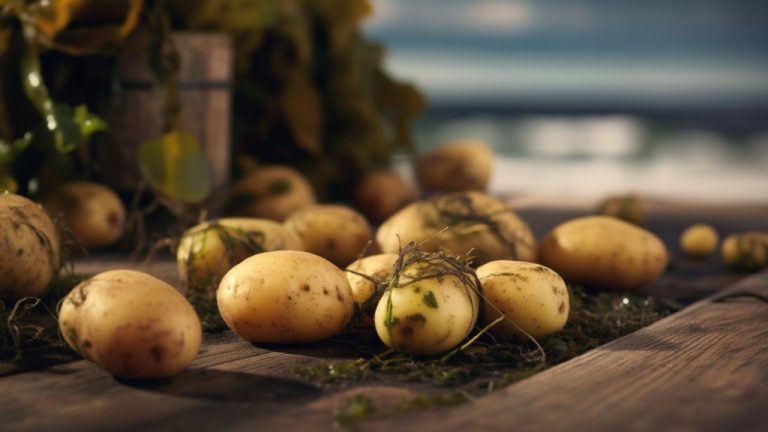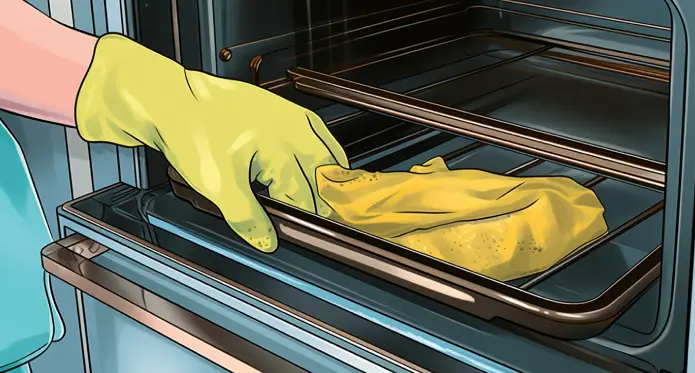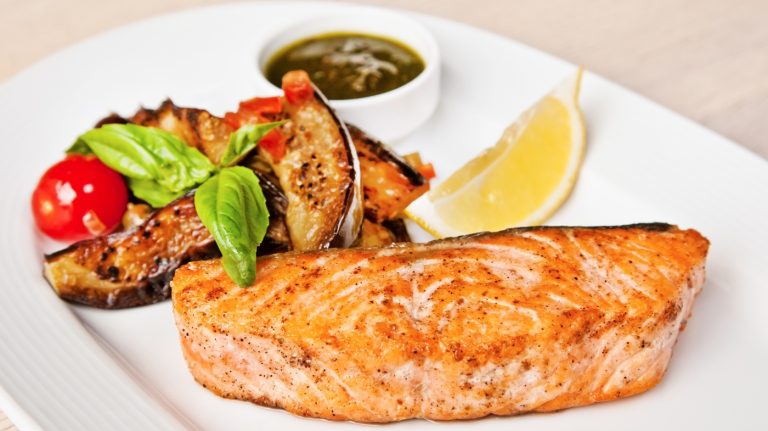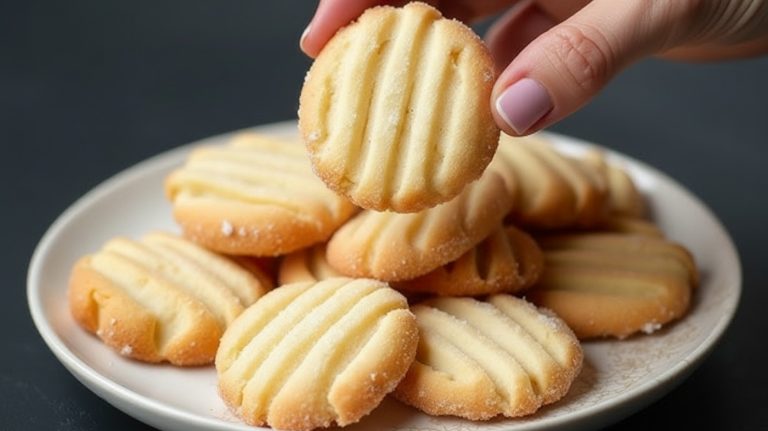Can You Bake in a Mason Jar: Find the Hidden Dangers
Baking in mason jars might seem like a fun idea, but it’s risky. Their glass can crack from thermal shock, and sealed jars can create an environment where harmful bacteria like *Clostridium botulinum* thrive.
Manufacturers specifically warn against using mason jars in the oven due to these safety concerns. Instead, consider oven-safe cookware for your baking needs. Curious about safer and more creative dessert alternatives? You’ll find plenty of delicious options just ahead.
Key Takeaways
- Baking in mason jars is not recommended due to the risk of glass breakage from thermal shock.
- Sealed jars create an environment that promotes *Clostridium botulinum* growth, increasing the risk of botulism.
- Manufacturers advise against using mason jars in ovens; they are not designed for high-heat applications.
- Use oven-safe containers like ramekins or borosilicate glass for baking instead of mason jars.
- Consider non-baked dessert options for safer and easier alternatives to baking in jars.
Understanding Mason Jar Construction
When you think of mason jars, you might picture their sturdy glass construction and classic design. These jars are crafted from soda lime glass, a blend of sand, soda ash, limestone, and cullet, ensuring durability for various uses.
The lids, typically made from stainless steel, incorporate iron ore, chromium, and nickel, providing a secure seal. A silicone or rubber gasket enhances this sealing capability, keeping your baked goods fresh.
The production process involves high-temperature melting, with natural gas fueling the furnaces, reflecting a significant energy investment. Understanding this construction helps you appreciate the functionality and reliability of mason jars, making them perfect for baking, canning, and creative projects alike.
Additionally, the BPA-free and lead-free glass materials ensure that your food remains safe and free from harmful chemicals. However, recognize that the production of mason jars is energy-intensive, contributing to greenhouse gas emissions and pollution.
Risks of Thermal Shock in Mason Jars
Mason jars, while versatile and reliable for various baking and canning projects, come with a hidden risk: thermal shock. This occurs when glass experiences rapid temperature changes, causing it to crack or shatter.
Since glass expands when heated and contracts when cooled, uneven temperature fluctuations can be particularly dangerous. Mason jars, made from annealed glass, are especially vulnerable due to their brittleness and poor heat conductivity.
Baking in Mason jars is considered dangerous and can lead to serious injuries if the glass breaks. Additionally, material durability plays a significant role in the safety of bakeware, as some materials can withstand temperature changes better than others.
Uneven temperature fluctuations can pose serious risks to mason jars, as their brittleness and poor heat conductivity make them prone to cracking.
Unlike tempered glass, which can withstand sudden changes, annealed glass shatters into sharp shards, making it unsafe for oven use.
To minimize risks, always preheat your jars gradually and avoid placing cold jars in hot environments. Consider using tempered glass bakeware instead for a safer baking experience.
Dangers of Botulism in Jar-Baked Goods
When you bake in mason jars, you’re creating an environment that’s perfect for *Clostridium botulinum* to thrive. The sealed jars trap moisture and limit oxygen, making it easy for this dangerous bacteria to grow.
To guarantee your baked goods are safe, follow proper storage practices and stay informed about the risks involved. Home-baked goods in jars can support C. botulinum growth, increasing the risk of botulism.
Botulism Growth Conditions
Botulism poses a serious threat in jar-baked goods, especially when you consider the growth conditions for Clostridium botulinum. This bacterium thrives in environments that are low in acid and high in moisture.
Here are the key conditions that promote its growth:
- Low Oxygen: *C. botulinum* flourishes in sealed environments with little to no oxygen.
- High Moisture: Moist baked goods create an ideal habitat for this bacteria.
- Improper Processing: If jars aren’t correctly canned or preserved, spores can survive, highlighting the need for proper canning methods.
- Low Acidity: Baked goods like bread and cakes typically have pH levels higher than 4.6, increasing botulism risk.
Being aware of these conditions is essential to guarantee your jar-baked treats are safe to enjoy.
Sealed Jar Hazards
Sealed jars might seem like a fun way to present baked goods, but they come with serious risks, particularly the threat of botulism.
The *Clostridium botulinum* bacteria thrive in low-acid, moist environments, making your jar-baked treats a potential breeding ground. Most cakes and breads lack sufficient acidity, and their high moisture content creates ideal conditions for these spores to grow.
Moreover, high moisture in baked goods can further exacerbate the risk of botulism. Since canning jars aren’t designed for oven use, they can shatter under dry heat, leading to burns and safety hazards. Plus, there are no reliable home recipes for safely canning baked goods.
The combination of these factors means that what looks like a charming dessert could pose a life-threatening risk. Always prioritize safety over trends!
Safe Storage Practices
Baking goods in jars may seem like a creative way to present your treats, but it’s crucial to recognize the risks that come with this method, particularly the dangers of botulism.
When you store baked goods in sealed jars, you’re creating an environment where harmful bacteria can thrive. Canning jars are not safe for baking because they can harbor harmful bacteria even after baking.
To prevent rust formation on lids, which can compromise the seal, make sure to regularly inspect canning jar rings. To minimize the risk, keep these safe storage practices in mind:
- Use oven-safe containers for baking instead of jars.
- Freeze baked goods for safe, long-term storage.
- Add acidic ingredients to inhibit bacterial growth.
- Follow tested canning methods for proper food preservation.
Manufacturer Guidelines on Baking
When it comes to baking in Mason jars, you need to heed manufacturer safety warnings. These jars are designed for canning and crafting, not for the unpredictable heat of an oven, which can lead to dangerous glass breakage.
Understanding the risks associated with glass composition is essential to keeping your baking adventures safe and enjoyable. Remember, inspecting jars for cracks or imperfections before use is crucial to prevent any mishaps during baking.
Manufacturer Safety Warnings
Although many people might think using Mason jars for baking is a creative idea, manufacturers like Ball and Kerr strongly warn against it due to significant safety risks.
Here are some critical points you should consider:
- Risk of Botulism: Sealing hot baked goods creates anaerobic conditions that can lead to botulism.
- Glass Safety Issues: Mason jars aren’t designed for ovens and can shatter from thermal stress. Additionally, historical popularity stems from their traditional use in canning rather than baking.
- Lack of Tempering: These jars aren’t tempered for high heat, making them unsuitable for baking.
- Risk of Injury: Handling hot jars risks injury from glass breakage.
For your safety, it’s best to stick to standard baking pans and avoid the dangers associated with baking in Mason jars.
Recommended Jar Uses
While using Mason jars for baking might seem innovative, understand their primary purpose to guarantee safety and effectiveness in food preservation.
These jars excel in canning and food storage, making them ideal for water bath and pressure canning when you follow manufacturer guidelines. Always verify your jars and lids are clean and preheated to minimize thermal shock.
Inspect for any damage before use, and remember that while the bands can be reused, lids should only be used once. Additionally, proper sealing techniques are crucial for maintaining food freshness, so if you’re looking to bake, consider alternatives like tempered glassware designed for oven use.
This way, you can safely enjoy your culinary creations without compromising the integrity of your food or the jars themselves. Additionally, using correct processing methods ensures that canned foods maintain their quality and safety for consumption.
Glass Composition Risks
Using Mason jars for baking may seem appealing, but understanding the risks associated with the glass composition is essential for safe cooking.
Here are some key points to take into account:
- Glass Types: Most canning jars are made of annealed glass, which isn’t suitable for oven use.
- Thermal Shock: Glass can break from rapid temperature changes, putting your delicious creations at risk.
- Manufacturer Guidelines: Companies like Ball and Kerr explicitly advise against baking in their jars.
- Chemical Safety: Verify your jars are free from harmful substances like lead and cadmium, as safety is paramount. Additionally, cakes in canning jars can pose a risk of botulism due to the potential for improper pH and moisture levels.
For your baking adventures, it’s wise to choose cookware designed for oven use instead of risking a shattered jar and a ruined treat.
Safe Alternatives to Mason Jar Baking
If you’re looking to explore baking without the risks associated with mason jars, several safe alternatives can enhance your culinary experience. Consider using ramekins or specialized glass cookware designed for high-heat applications, ensuring durability and safety.
Glass jars like Weck jars are excellent for sourdough starters, as they provide visibility and insulation for effective fermentation. Borosilicate glass dishes are excellent for delicate recipes, while ceramic crock pots provide insulation for your sourdough starters.
If you’re after affordability, reusable deli containers work well, but avoid them for acidic mixtures due to potential breakdown. Non-reactive metal containers can also be a good choice for such recipes.
Exploring Non-Baked Dessert Ideas
Baking in the kitchen can be a delightful adventure, but sometimes, the heat of the oven isn’t necessary for creating delicious desserts. Non-baked treats can be just as satisfying!
Here are a few versatile options to contemplate:
- Oreo Desserts: Whip up layers of crushed Oreos, cream cheese, and chocolate pudding for a heavenly treat that’s perfect for celebrating special occasions.
- No-Bake Cakes: Try an Oreo Icebox Cake, perfect for potlucks and gatherings.
- Pudding Desserts: Instant pudding can create quick and delightful layers in various desserts.
- Cream Cheese Treats: Use cream cheese for a smooth base in no-bake cheesecakes.
These desserts not only save time but also let you experiment with flavors and textures without turning on the oven!
Choosing Proper Bakeware for Your Oven
Choosing the right bakeware can make all the difference in your baking experience. Start by considering materials; aluminum is great for even heat, while glass retains warmth well—just lower your oven temp by 25°F.
Additionally, the importance of selecting quality pans cannot be overstated, as it directly impacts the outcome of your baked goods. Using silicone mats can enhance your baking results by providing a non-stick surface that promotes even cooking.
Selecting the right bakeware is crucial; aluminum ensures even heat, while glass offers warmth retention—just adjust your oven temp!
If you’re after versatility, a standard 9 x 13-inch pan or half-sheet pan covers many recipes. Specialty pans, like springform or bundt, add flair to your creations. Prioritize safety; make certain your bakeware withstands high temperatures and is durable enough for repeated use.
Look for ergonomic designs and easy-to-clean surfaces, as maintenance can extend your bakeware’s life. Don’t forget to check for proper oven fit, allowing 2 inches of clearance around each pan for ideal heat circulation.
Creative Uses for Mason Jars Beyond Baking
Mason jars aren’t just for preserving fruits and vegetables; they offer endless possibilities for creativity and organization in your home. You can transform these versatile containers into functional and decorative items that enhance your space.
Here are some creative uses for mason jars:
- Pantry Organization: Store dry goods like grains and beans, keeping them fresh and tidy. Organizing cooking utensils can also be easily achieved by using jars to store and display your tools. Additionally, using mason jars for storage contributes to waste reduction by encouraging reuse instead of disposal.
- Candle Holders: Create a warm ambiance by using jars as enchanting candle holders.
- Gift Ideas: Present layered recipes or homemade treats in jars for thoughtful gifts.
- Craft Projects: Make unique DIY snow globes or fairy jar lanterns for a magical touch.
With these ideas, you can release your creativity and enjoy the charm of mason jars in various ways!
Frequently Asked Questions
Can I Reuse Mason Jars After Baking in Them?
Absolutely, you can reuse Mason jars after baking in them! Just make sure to clean them thoroughly to remove any residues.
Inspect for cracks or chips before reusing, as repeated heat can weaken the glass. You can repurpose the jars for storage, crafts, or even as decorative pieces.
What Are the Signs of a Broken Mason Jar?
When you suspect a mason jar is broken, look for telltale signs. You might hear a sudden cracking or popping noise, or see visible cracks, especially at the bottom or rim. If you notice glass shards or liquid leaking out, that’s a clear indication of breakage.
Also, be alert for jars that aren’t sealing properly or show unusual pressure during canning, these can signal an impending failure. Always inspect your jars before use to guarantee safety!
How Can I Safely Store Baked Goods in Mason Jars?
To safely store baked goods in mason jars, start by ensuring the jars are clean and dry. Use airtight lids to keep moisture out and label each jar with contents and dates for easy tracking.
Store your jars in a cool, dark place to prevent spoilage, avoiding direct sunlight. If you’re dealing with high-moisture items, consider refrigeration or freezing to extend freshness, keeping your treats delicious and safe to eat.
Are There Specific Recipes Designed for Mason Jar Baking?
While there aren’t specific recipes designed for baking directly in mason jars, you can create delicious layered cookie mixes or cake mixes to gift or use later.
These mixes combine dry ingredients beautifully, making them visually appealing. Instead of baking in the jars, simply prepare the mixes and bake them in a traditional pan.
You’ll enjoy the convenience and charm of mason jars while ensuring your baked goods turn out perfectly every time!
Can I Microwave Mason Jars for Baking Instead?
Wondering if you can microwave mason jars for baking? While you can safely microwave them for reheating, baking isn’t recommended.
Mason jars aren’t designed for high heat and may crack or shatter. Instead, use them for warming soups or dips, ensuring they’re free from metal parts.
Always check for microwave-safe symbols and avoid sudden temperature changes. For baking, stick to conventional oven-safe containers for safety and better results.
From Tempting to Treacherous: Truth About Baking in Jars
In the world of baking, mason jars can feel like tempting treasure chests, but they come with hidden dangers. While the idea of creating jarred delights is enticing, the risks of thermal shock and botulism can turn your sweet creations into a recipe for disaster.
Instead, embrace safer bakeware and explore delicious no-bake options that let your creativity shine. Remember, there are many ways to whip up treats without compromising safety, your kitchen is a canvas waiting for your masterpiece.


